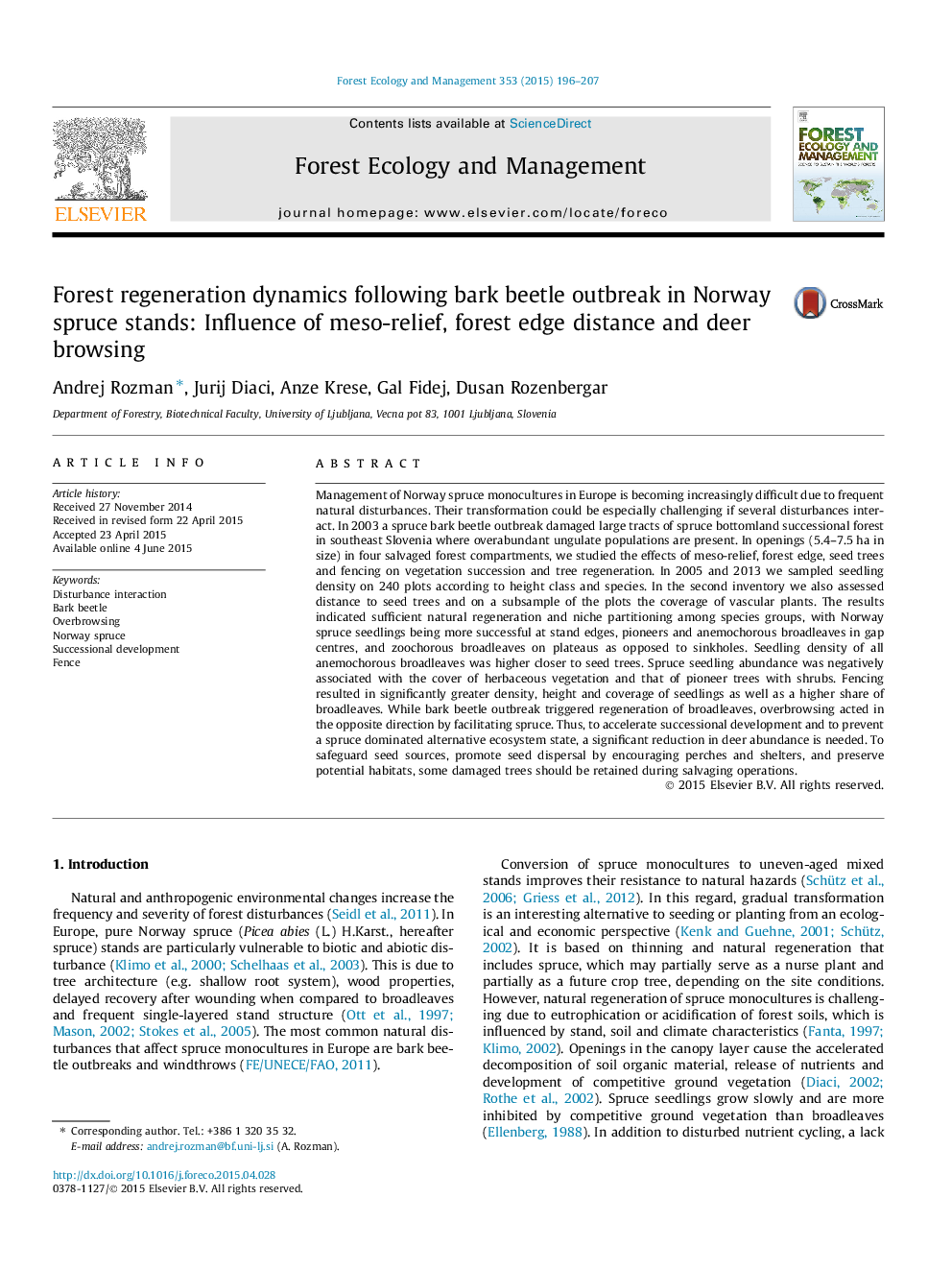| کد مقاله | کد نشریه | سال انتشار | مقاله انگلیسی | نسخه تمام متن |
|---|---|---|---|---|
| 86232 | 159172 | 2015 | 12 صفحه PDF | دانلود رایگان |
• We examined successional trajectories in fenced and unfenced salvaged stands.
• Spruce’s share in regeneration density decreased over time.
• Fencing accelerated successional development and favoured broadleaves.
• Regeneration niche partitioning was affected by meso-relief and forest edge.
• Shorter distances to seed trees favoured spruce and anemochorous broadleaves.
Management of Norway spruce monocultures in Europe is becoming increasingly difficult due to frequent natural disturbances. Their transformation could be especially challenging if several disturbances interact. In 2003 a spruce bark beetle outbreak damaged large tracts of spruce bottomland successional forest in southeast Slovenia where overabundant ungulate populations are present. In openings (5.4–7.5 ha in size) in four salvaged forest compartments, we studied the effects of meso-relief, forest edge, seed trees and fencing on vegetation succession and tree regeneration. In 2005 and 2013 we sampled seedling density on 240 plots according to height class and species. In the second inventory we also assessed distance to seed trees and on a subsample of the plots the coverage of vascular plants. The results indicated sufficient natural regeneration and niche partitioning among species groups, with Norway spruce seedlings being more successful at stand edges, pioneers and anemochorous broadleaves in gap centres, and zoochorous broadleaves on plateaus as opposed to sinkholes. Seedling density of all anemochorous broadleaves was higher closer to seed trees. Spruce seedling abundance was negatively associated with the cover of herbaceous vegetation and that of pioneer trees with shrubs. Fencing resulted in significantly greater density, height and coverage of seedlings as well as a higher share of broadleaves. While bark beetle outbreak triggered regeneration of broadleaves, overbrowsing acted in the opposite direction by facilitating spruce. Thus, to accelerate successional development and to prevent a spruce dominated alternative ecosystem state, a significant reduction in deer abundance is needed. To safeguard seed sources, promote seed dispersal by encouraging perches and shelters, and preserve potential habitats, some damaged trees should be retained during salvaging operations.
Journal: Forest Ecology and Management - Volume 353, 1 October 2015, Pages 196–207
